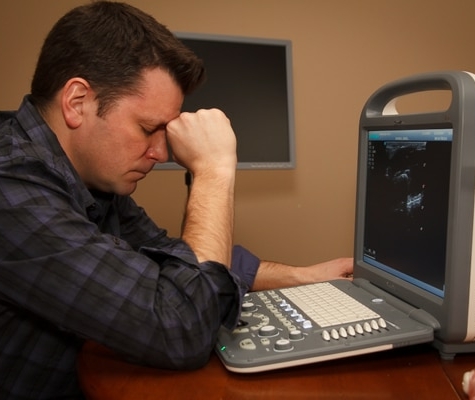What is sound? Essentially it is a type of wave that carries energy from one point to another. Sound is created by the vibration of a moving object; thus, it cannot travel through a vacuum (space) and MUST travel through a medium. For example, we can hear each other’s voices because they travel through a medium … air. In contrast, if we were to speak in outer space it would be absolutely silent because there is no medium … no air. The human voice frequency range lies between 50 to 500 hertz and we generally can hear from 20 hertz to 20 thousand hertz.
Now thinking in the ultrasound world, frequencies exists between 1 million hertz to as high as 20 million hertz and beyond! Since we can only hear up to 20kHz we obviously cannot hear ultrasonic frequencies. But what if we could hear in the millions of hertz? Would we then hear ultrasonic frequencies? In short, no. Why is this? As sound frequencies get higher the medium in which it needs to travel through must be denser. Another way to look at this is for a given density as the frequency increases (20khz, 50khz, 1Mhz) attenuation of that frequency increases. Air is certainly NOT dense although dense enough for very low frequencies like our voices, instruments, cars, and all things we hear on a daily basis. In contrast, when we deal with ultrasonic frequencies (in the millions of hertz) the medium needs to be far denser for it to travel from point A to B. This is the reason why we need to add water to our ultrasound phantoms and gel to the human body when scanning. Both water and gel are much denser than air thus allowing ultrasonic energy to travel.
Now, we can better understand what is going on with an ultrasound probe when we say the lens is delaminated or a 3D probe has a bubble. With either of these conditions we will normally see a shadow in the image as well as a decrease in sensitivity on the First Call report because the ultrasonic waves are unsuccessfully trying to travel through air.


